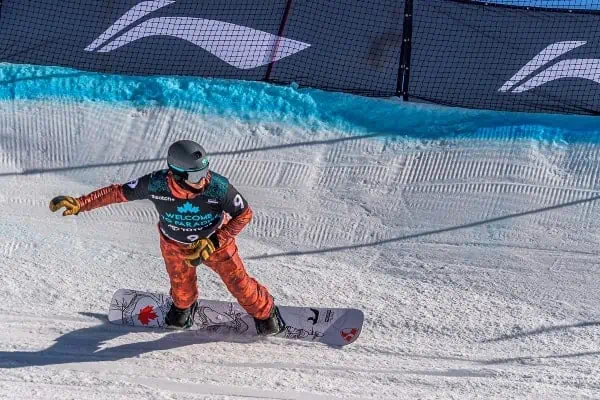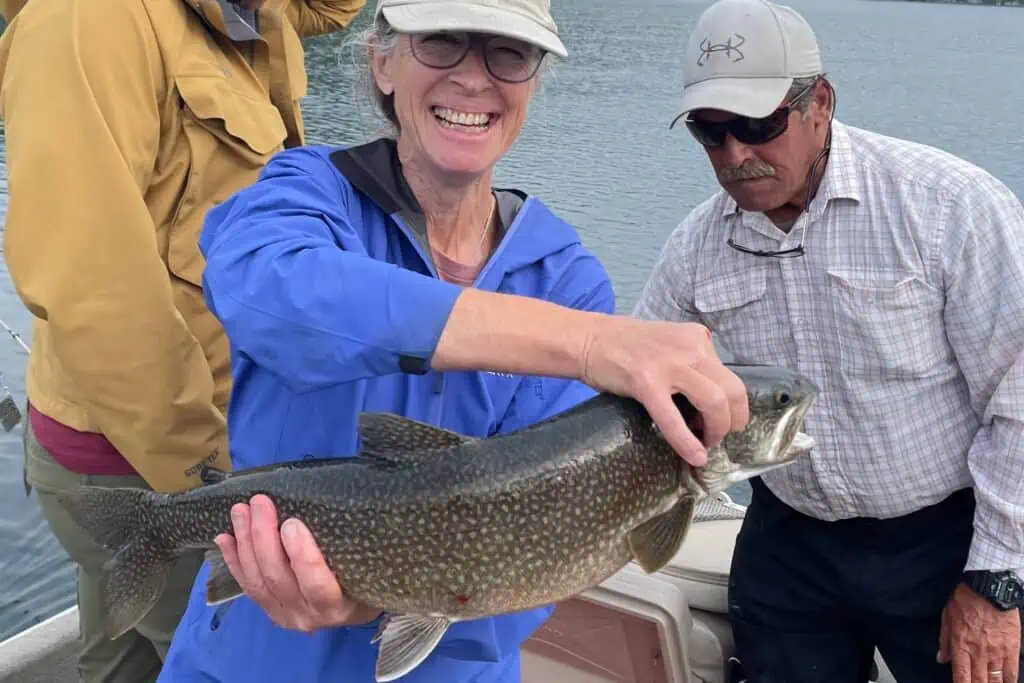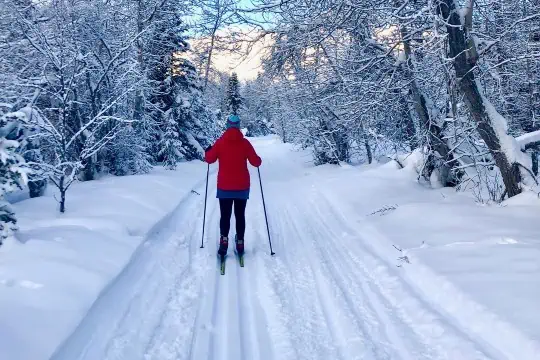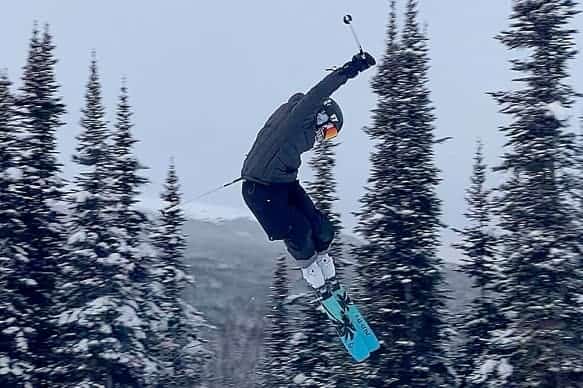I will try anything once; twice if the first time doesn’t kill me. Which is fortunate, because that’s how many times I had been skiing prior to my lesson at the Mount Sima Ski School: exactly twice.
I was 17 and had gone on a “romantic ski date” with my then-boyfriend at the Batawa Ski Hill in Southern Ontario. I remember little of the experience, save that the day was bitterly cold and grey and that standing at the top of hill and falling down it over and over and over until I spat mouthfuls of snow and had ice balls in my nose hairs did not fall under my definition of “romantic.”
Several years later, I tried snowboarding with a friend, this time at a small ski hill in Gatineau, Quebec. I am 95 per cent certain I broke my tailbone.
That is the entirety of my experience on the slopes when my instructor, Antje Beaman, gets a hold of me at Mount Sima Ski Hill, three Saturdays ago. Unlike my previous experience – and all logical Yukon expectations – it is a bright, sunny day, a balmy -10 degrees. A few loose flakes of snow flitter about us as Beaman explains to me, clearly and patiently, the mechanics of skiing.
“So – Pizza Slice,” she says. She turns her skis so that they point in at 45 degrees, but do not touch, exactly like a pizza slice. “And then – French Fry.” She puts her skis parallel to each other, like two french fries laid down side by side, and laughs, “I teach a lot of kids, that’s how they remember it best.”
Pizza Slice is for stopping. French Fry is for going. I think I can handle that and we move over to the T-bar.
The downhill skis look a little bit like cross country skis (Author’s Note: I am also a terrible cross country skier – usually I only get anywhere by sheer refusal to quit) but do not feel at all like them; they are much heavier feeling, and wider.
When I mount the rope tow – a series of handholds on a pulley rope, which gives a surprising jolt when you grasp it – and begin being pulled up the hill my skis make a soft swooshing sound. I giggle to myself and think that this must be what it would feel like to be a ski-doo.
We go just a little ways up, Beaman patiently behind me, and she shows me the mechanics of turning. Look where you want to go, put your weight on the inside leg – this is comfortingly familiar to me, not unlike riding a motorcycle. We go down the hill a little ways, french fry pizza, french fry pizza, look, turn, french fry pizza. I’m feeling quite confident – Beaman is a patient teacher who gives very clear instructions – and my legs, through strained in the constant position (butt out like I’m riding on an invisible horse) are feeling good and strong and not at all tired. We take the rope tow again and go to the top of the bunny hill as, over our heads, the lift chairs ferry people up to the more serious, “real” hill, which in my mind looks impossibly steep.
At the top of the bunny hill, kids – some as young as four or five and mounted on adorable skis no longer than my forearm – barrel down to the bottom, often unescorted. This is both reassuring and unnerving at the same time; surely if little kids can do this, I can do this, but I have a natural distrust of anything that looks too easy.
“Ok!” Beaman says. “Let’s go: slow, easy turns.”
I start moving down the hill, slowly gaining speed. A gentle, controlled turn, a little more speed…
And then suddenly I’m careening down the hill, faster and and faster, zig zagging, trying to turn or stop or both at the same time and those same adorable little kids are now racing projectiles I might smash into at any moment and crush, like a bird on a windshield and I’m thinking, “Oh God what will I say to their parents?” So I do the only logical thing to do, dig my skis in side way, turn my body and utterly bail in a flurry of snow and mittens.
At this very moment a girl of about eight in a pink helmet goes by on the rope tow and shouts, “Nice one!” It occurs to me abruptly that children grasp sarcasm at a much younger age than I previously believed. Fortunately I have no dignity to speak of and so I think this is all very funny. I am in fact laughing when Beaman comes to help me up.
“Are you okay?” she asks quickly. “You were going pretty fast!”
I get up after a few unsuccessful tries. Beaman has to show me how to get my skis off, pressing hard on the lock on the back, and I find that I am okay. I’m totally fine. A little more nervous than before, but I manage to complete the run with Beaman’s help and get to the bottom.
The lesson is now over and the sun is really shining and the snow is impossibly white and clean and powdery and I feel, surprisingly, very good. And that’s exactly the point of having the lesson – skiing isn’t something you’re going to be good at, but it’s something you can enjoy even if you’re not a world class ski racing champion; it was a tremendous pleasure just to be outside in the fresh air and sunshine, and I am pleasantly tired and happy.
“That’s the thing,” Beaman says as we go back inside. “Skiing has to be something you enjoy, learning it has to be fun – especially for kids. If you make it fun for kids, then they’ll come back and keep learning and then when they’re adults they’ll take their kids. It’s good for them and it keeps the sport alive.”
Later, warming up with a cup of black coffee from the canteen, I asked Anjte Schiebel, manager of the Snow School for Mount Sima, which offers ski instruction, what she would tell people who were just starting out.
“I would give (both kids and adults) the same advice,” she says. “Make sure you stretch! And do other sports. We have kids who do gymnastics who are so much better adapted for skiing… yoga is great for adults too.”
Mount Sima offers lessons for both adults and children, and is currently running ski camps for kids during March break. Unfortunately, the kids camps are already sold out. Schiebel says they are so popular they can get booked up as early as November or December – but they do offer walk-in lessons.
Mount Sima Ski Hill is usually open Friday through Sunday, but will be open every day during the March Break: March 7 to 18. They offer bare-beginner courses (for people like me!), intermediate classes and refresher courses for those who just want to touch up their skills. For more information call (867) 668-4557.




